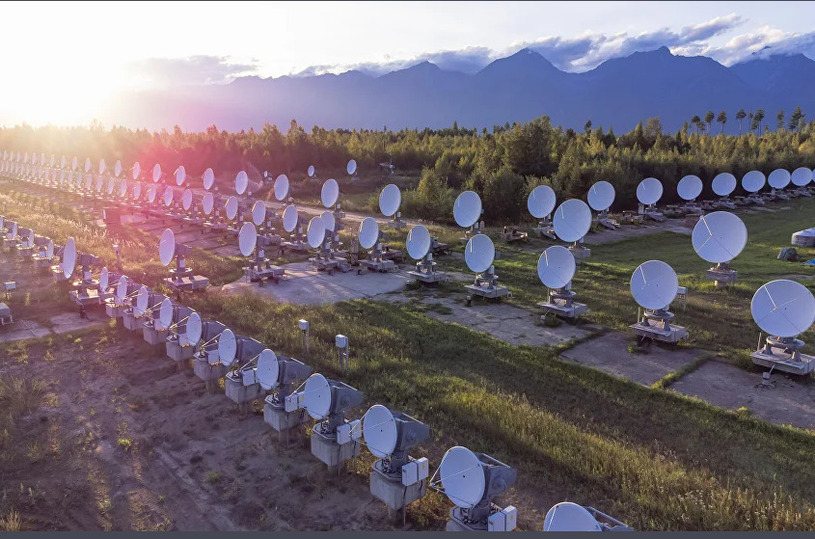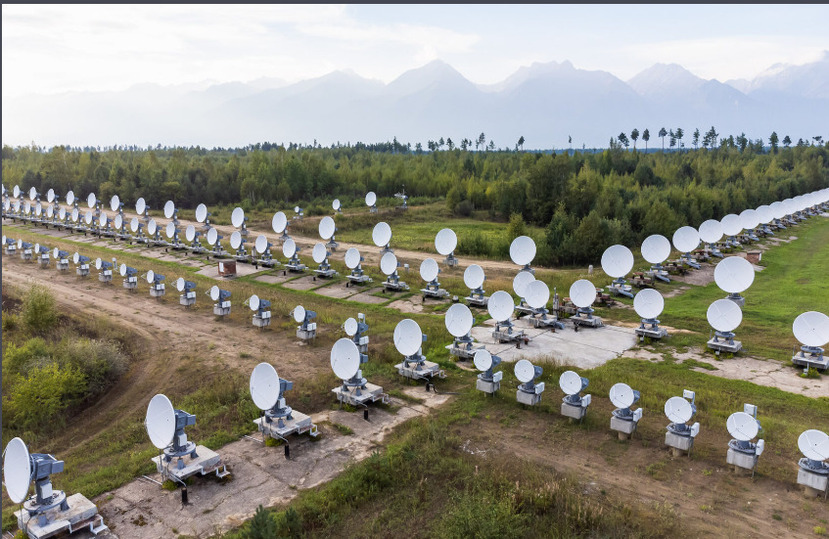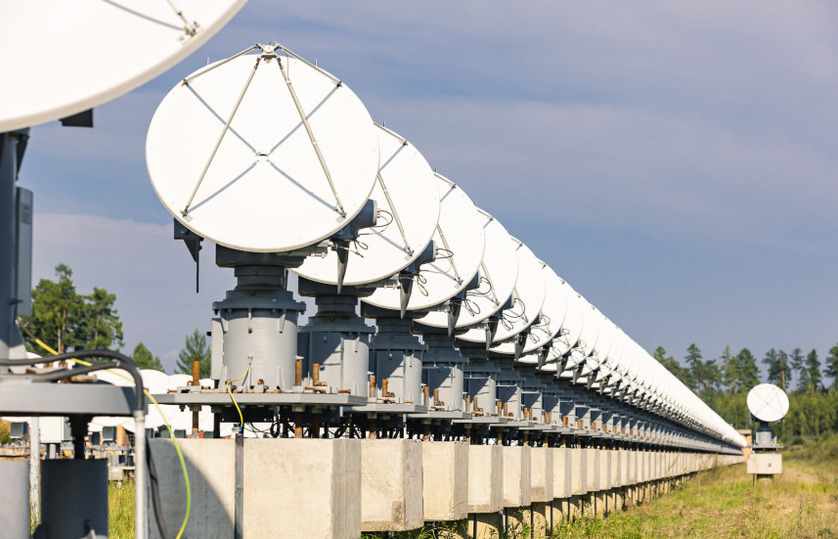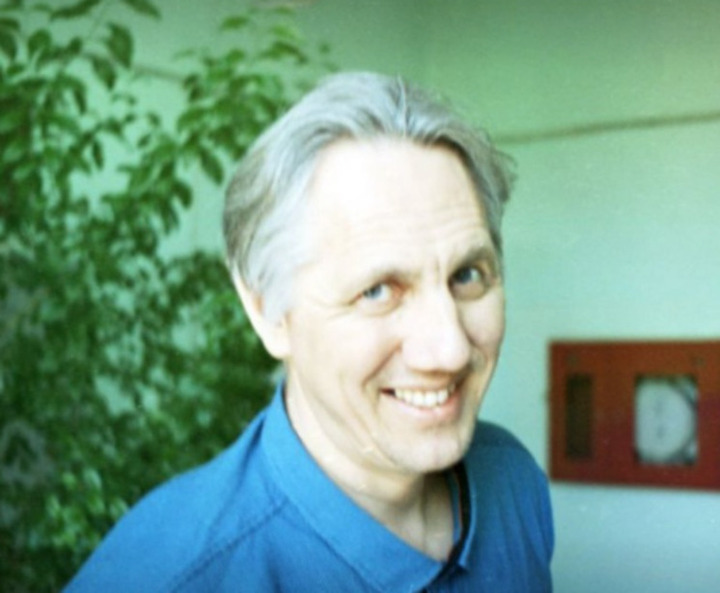Russian scientists are preparing to influence the ionosphere with powerful radiation and cause the polar lights

According to the Russian Ministry of Education and Science, the heating stand project, which is planned to be built near the city of Angarsk, recently received a positive conclusion from the state expert review. It is said that the stand, as part of the NKG RAS, will become a unique Russian scientific installation of mid-latitudes for controlled experiments on ionosphere modification.
— Roman Valerievich, tell us what the installation will be and why it is necessary to modify the ionosphere with its help?
– On a field the size of two football pitches, we plan to install 200 reinforced concrete supports 40 meters high. On their tops, we will place 200 special antennas that will be able to send a narrow beam of short radio waves upward. The effective power of the compressed beam will reach 500 - 1500 MW. Absorbed high in the Earth's ionosphere, the beam will cause its heating and disturbance. All this will be recorded by ground-based devices.
Now about why such modification is needed. Let me remind you that the ionosphere is the upper layer of the atmosphere that affects the propagation of radio waves, and ultimately determines for us, earthlings, the ability to arrange radio communication and radar - whether we use ground-based means, satellite devices, shortwave or other types of equipment. Naturally, if the ionosphere helps us maintain communication with each other, its various states can also worsen this communication, right? Therefore, experiments on ionosphere modification will allow us to understand how the conditions of radio communication will be disrupted in various conditions. That is, we are setting up a controlled experiment, modifying, changing the ionosphere in order to study all its states.

— What causes modifications of the ionosphere in nature?
– The ionosphere is most influenced from the outside, from the space surrounding the Earth. And the strongest influence comes from the star closest to us – the Sun.
- How?
– Firstly, the Sun pours an unimaginable flow of energy to us on Earth – one and a half kilowatts per meter, because of which, strictly speaking, life is possible on our planet. However, in addition to this powerful flow, there is, let’s say, a slightly weaker, but more variable flow of hard ultraviolet, X-rays, solar plasma, which also flows from the Sun and changes in accordance with flares and other processes on it. All these phenomena greatly affect the upper layers of the atmosphere, changing its properties. In our case, the heating stand is needed to reproduce the influence of such phenomena on the upper atmosphere from Earth, and in almost controlled conditions.
– What else besides the Sun can influence the ionosphere?
The lower atmosphere itself can influence. After all, it itself is the same non-stationary shell, which is periodically disturbed by weather changes, cyclones, atmospheric fronts. All this generates wave processes in the atmosphere, which transfer the energy of these disturbances of the lower atmosphere to the upper one, including the ionosphere.

– Can terrestrial power plants, transport, and airplanes influence the ionosphere?
- Of course, all this has an effect, but to a lesser extent. Compared to the power of natural phenomena, their influence is almost insignificant.
– Will the beam that you are going to send to the ionosphere from Earth have a greater effect?
There is the following peculiarity: the flux density from the heating installation will be very high, but it will be concentrated in a very small area of space – an area of 10 to 100 square kilometers. In other words, the influence of the heating stand will be very local, against the background of natural processes it will be simply insignificant. But this “probe” will be enough for us to model what happens to the ionosphere during solar effects, how they affect communications. The consequences themselves are, of course, known, but the process itself and whether and how it can be influenced are not fully known.

– List the most common negative effects of changes in the ionosphere on the lives of the inhabitants of the Earth.
— Let's start with the last century, when we didn't have satellite communications yet. Humanity used only short-wave radio communications to connect two distant subscribers. The radio wave emitted by one subscriber rose up, and then, reflecting off the ionosphere, fell down – and this happened several times until it reached large distances of thousands of kilometers. If the ionosphere, for example, as a result of a solar flare, changed its characteristics, then this short-wave communication could be disrupted.
We now have satellites to transmit information using radio waves. Fiber optic cables are stretched across the globe to transmit information. The impact of solar flares on these cables is minimized, but satellites are still subject to powerful fluctuations in the density of the upper atmosphere and ionosphere, which slow down the satellites, reducing their service life, and distort communication channels. We are studying how this happens, whether it is possible to somehow influence the plasma of the ionosphere to change it.
But in addition to everything else, we will also study some more fundamental things. For example, the process of energy transfer from the ionosphere to the neutral atmosphere and back, what consequences such heating will bring, how the chemical composition of the upper atmosphere will affect it. Let's take, for example, the widely discussed problem of heating the atmosphere due to the accumulation of carbon dioxide in it. It is not yet known for sure whether humans influence the change in gas composition, or the planet itself does it. But nevertheless, this fact is present - the chemical composition of our atmosphere is changing. What will this result in in the future?

– Are there any forecasts on this matter?
The accumulation of CO2 is already changing the upper atmosphere, and it has been found that it is becoming colder. This is due to the property of carbon dioxide to convert heat energy into infrared radiation, which in the much less dense layers of the upper atmosphere (compared to the lower) goes into space. By studying the features of the physical and chemical processes of the upper atmosphere, including with the help of a heating stand, we can understand how this process will proceed in the future.
– How does your installation differ from similar installations existing in the Nizhny Novgorod region, from the American HAARP stand?
Currently, humanity has three similar installations all over the globe. One is in Alaska (the same HAARP – High Frequency Active Auroral Research Program), another one is in Europe, and another one is in the Nizhny Novgorod region, Russia. Foreign ones are equipped with the most complete set of diagnostic equipment, ours is not as wide a range. But the stand that we are creating within the framework of the RAS NGC will surpass all existing analogues. The scientific director of ISTP SB RAS, academician of the RAS Geliy Aleksandrovich Zherebtsov back in the 2010s proposed to make a significant modernization of the hardware base for the study of solar-terrestrial physics in Russia – the RAS NGC. Realizing this idea, we are now creating a complex for observing the Sun, the upper atmosphere, the ionosphere using a solar telescope, radar, radioheliograph, a set of small geophysical instruments. As for the heating stand itself, we will observe the area of impact on the ionosphere using the most complete set of optical and radiophysical instruments. At the same time, a lidar will be working, studying the thermosphere, an incoherent scatter radar and other devices diagnosing the characteristics of the ionosphere, neutral atmosphere, and geomagnetic field. All this information and experiments on simultaneous observation and impact on the ionosphere will be coordinated by a single center for collecting and processing information, which will also be built within the framework of this project. Well, and the apotheosis of all this action will be the summation of the obtained results, their coordination in a supercomputer with subsequent modeling of future processes in the upper atmosphere.
– What would you like to achieve in the end?
Assess the possibility of artificially changing the physical parameters of the upper atmosphere: density, temperature, dynamics, and properties of the ionospheric plasma. From a practical point of view, it would be useful to understand how the physical and chemical energy balance of the upper atmosphere can change and the impact of this process on the conditions of radio wave propagation or more accurate estimates of the braking of low-orbit artificial Earth satellites.

– But is it not possible to control natural processes using such installations?
— As I have already said, the area of influence is too small to have a significant impact on the upper atmosphere and ionosphere. The most we can count on is the generation of artificial radio emission and optical glow of not very high intensity, the generation of weak wave processes in the ionosphere and small variations in the geomagnetic field. Moreover, these phenomena will weaken very quickly against the background of natural variations in the environment as they move away from the area of influence. At present, there is information that the operation of heating stands launches trigger mechanisms for the development of substorms and the precipitation of particles from the magnetosphere. It would be very interesting to repeat such studies.
- A substorm is...
— These are strong local variations in the geomagnetic field that occur during a global magnetic storm, accompanied by particle precipitation and polar auroras.
— Will you invite me to the first tests of the stand?
- Of course, but I think they will not take place before 2030.
mk.ru




